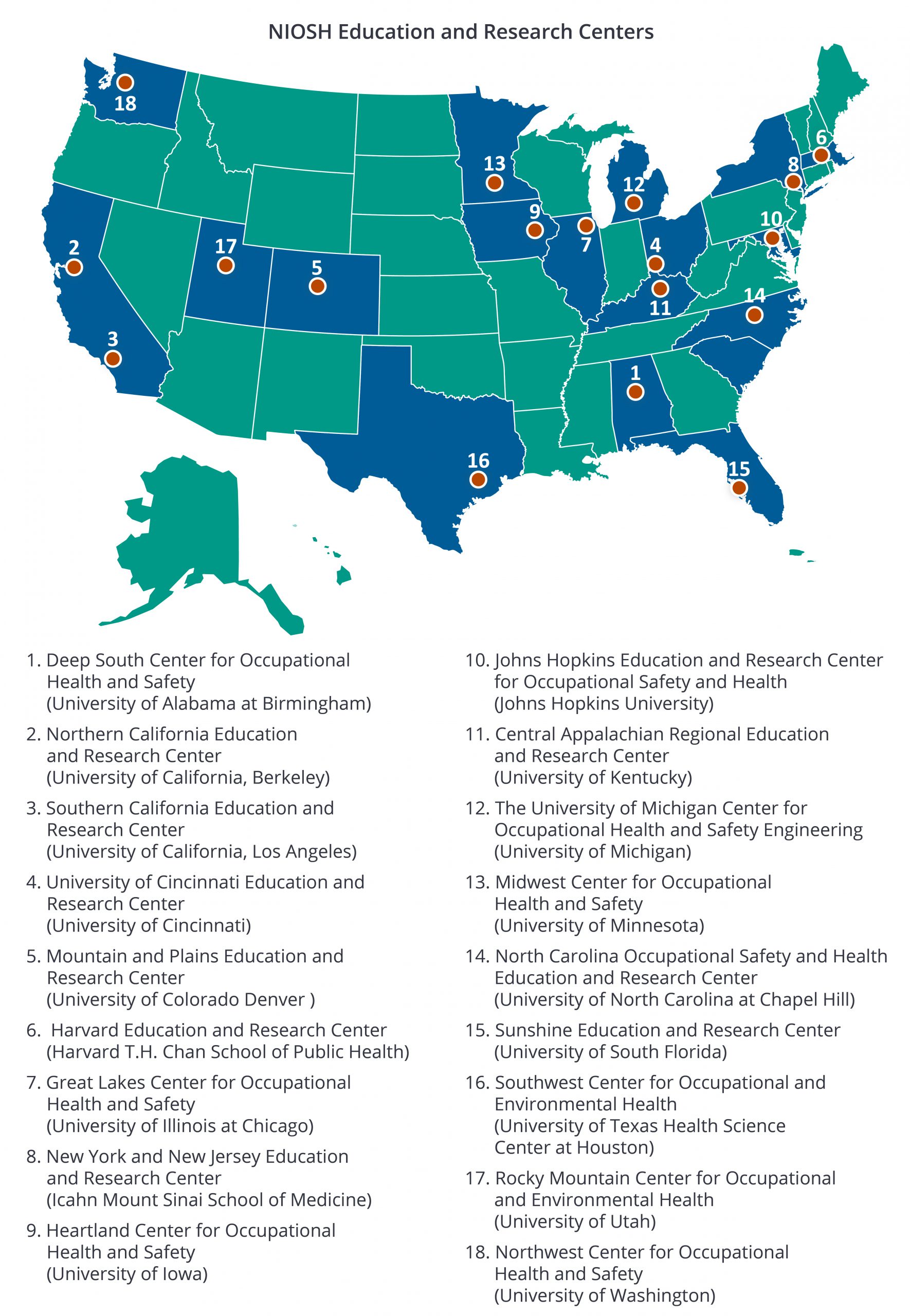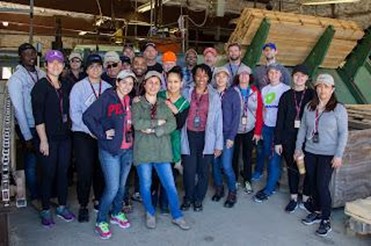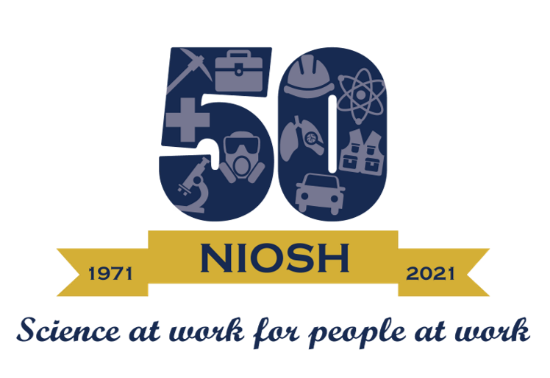NIOSH Education and Research Centers: Training
Posted on byAs part of its mandate, the National Institute for Occupational Safety and Health (NIOSH) is required to provide an adequate supply of qualified personnel to carry out the purposes of the Occupational Safety and Health Act (Public Law 91-596).The NIOSH-funded Education and Research Centers (ERCs) are one of the principal means for meeting this mandate. In 1977, the first nine ERCs were established in nine different states. By 1985, the number of centers grew to 14 centers in 14 states before further increasing to the current 18 ERCs in 17 states.

These university-based centers carry out multidisciplinary education and research training activities and offer graduate and postgraduate training in the core and allied fields of occupational safety and health. They develop and implement a wide range of programs to train the next generation of occupational safety and health (OSH) practitioners and researchers. The ERC training programs use an interdisciplinary approach to address the complex issues involved in identifying and preventing workplace related injury and illness. The ERC training programs are designed to be innovative and flexible and reflect the ongoing changes of the nature of work. No better example of these fluid changes exists than the experiences of the U.S. workforce these past two years during the COVID-19 pandemic. Through NIOSH funding, trainees receive financial support for their tuition and other fees, along with a stipend which can be used towards cost of living and other academic expenses, allowing students to focus on OSH training.
Trainees engage in both classroom ‘bench science’ and ‘field experiences’ using the research to practice approach of ERC Training Programs. A key element of ERC training programs is the translation of science and research-based practice into knowledge and skills to develop, implement and manage programs that ensure a safe and healthy workforce. Through these complementary approaches, trainees see first-hand how multiple factors affect workplace health & safety. Trainees learn to identify emerging issues and risks, develop perspectives related to the effects of globalization and understand how changing workplace demographics result in novel exposures to risk and can create workplace related health disparities in the U.S. workforce.
Graduates of the ERC Training Programs are employed in federal, state, and local government agencies, not-for-profit agencies, industry, academia, business, healthcare, and labor organizations. Between 1977, when the ERCs began, and 2020, 11,618 trainees graduated.
The highlights below illustrate the work of the ERC programs and how graduates are making a difference in promoting healthier and safer workplaces through their diverse educational experiences in ERC Training Programs.
Success Stories of ERC Trainees and Graduates
State of the Art Interdisciplinary Training

The Great Lakes Center for Occupational Health and Safety (GLC-OHS) at the University of Illinois Chicago (UIC) was the first ERC to develop a Pilot Project Research Training (PPRT) program in 1999 and was a model used by other ERCs to create their own programs. The program was modeled on a prior UIC program. The ERC initiated a mini-grants program that awarded funding to 34 trainees in the occupational health programs at UIC. The program provided small amounts of funding to ERC trainees in occupational health for research training purposes. The original UIC program set the stage for the formally funded PPRT program by providing the experience and culture that encourages researchers to pursue original lines of inquiry with limited funds.
 Laura Taylor, PhD, MS, is a Postdoctoral Fellow at the U.S. Environmental Protection Agency (EPA) and a recent graduate of the Occupational Exposure Science/Industrial Hygiene program at the North Carolina Occupational Safety and Health Education and Research Center. She recently received an award in recognition of her work on High Throughput Transcriptomics (HTTr). Dr. Taylor has worked primarily on developing pathway-based predictions of chemical toxicity. She has leadership positions in national efforts to apply computational approaches to chemical safety decisions and has been instrumental in establishing guidelines for assay validation. Dr. Taylor has presented her work at national conferences, as well as various seminars, team meetings, and branch meetings. In her role within the EPA’s Computational Toxicology and Bioinformatics Branch, Dr. Taylor serves as a technical resource for trainees and leads innovation discussions at branch meetings. She has participated in several outreach opportunities as an ambassador for the Agency’s mission.
Laura Taylor, PhD, MS, is a Postdoctoral Fellow at the U.S. Environmental Protection Agency (EPA) and a recent graduate of the Occupational Exposure Science/Industrial Hygiene program at the North Carolina Occupational Safety and Health Education and Research Center. She recently received an award in recognition of her work on High Throughput Transcriptomics (HTTr). Dr. Taylor has worked primarily on developing pathway-based predictions of chemical toxicity. She has leadership positions in national efforts to apply computational approaches to chemical safety decisions and has been instrumental in establishing guidelines for assay validation. Dr. Taylor has presented her work at national conferences, as well as various seminars, team meetings, and branch meetings. In her role within the EPA’s Computational Toxicology and Bioinformatics Branch, Dr. Taylor serves as a technical resource for trainees and leads innovation discussions at branch meetings. She has participated in several outreach opportunities as an ambassador for the Agency’s mission.

Started in 2006, the Historical Perspectives on Occupational Safety and Health Tour, conducted by the New York/New Jersey Occupational Safety & Health Education and Research Center, is an innovative interdisciplinary five-day trip that brings trainees to sites of both historical and contemporary significance with an in-depth view of industries relevant to the Northeast U.S. economy. Guided by faculty, the tour experience allows trainees to collaboratively identify solutions to occupational issues from a holistic team approach. Many tour stops are active sites, so trainees see workers engaged in their work on-site: lobster fisherman in Maine, granite workers in Vermont, auto workers in Detroit, and steelworkers in Pittsburgh. Trainees participate in interdisciplinary teams to develop a presentation on each of the sites on the tour. Issues related to industrial hygiene, occupational safety, occupational medicine, and ergonomics are explored. This tour successfully bridges the occupational safety and health fields to better understand how occupational and environmental exposures have occurred to prevent future exposures so that workplace conditions and health can be improved.
 Since the development of the Central Appalachian Region Education and Research Center at the University of Kentucky, the Safety, Security & Emergency Management program at partner institution, Eastern Kentucky University (EKU), has created myriad new occupational safety internships. These are offered through various partnerships within the university and community. For example, their Center for Economic Development, Entrepreneurship and Technology is a part of their internship network, but it is housed within the College of Business and Technology on the EKU campus. In particular, the following organizations are providing internships for students in Central Appalachia: Marathon Oil, Ashland Oil, Georgia-Pacific, Amazon.com, Owens Corning, and Aera Energy.
Since the development of the Central Appalachian Region Education and Research Center at the University of Kentucky, the Safety, Security & Emergency Management program at partner institution, Eastern Kentucky University (EKU), has created myriad new occupational safety internships. These are offered through various partnerships within the university and community. For example, their Center for Economic Development, Entrepreneurship and Technology is a part of their internship network, but it is housed within the College of Business and Technology on the EKU campus. In particular, the following organizations are providing internships for students in Central Appalachia: Marathon Oil, Ashland Oil, Georgia-Pacific, Amazon.com, Owens Corning, and Aera Energy.
Faiyaz Bhojani, MD, MPH, DrPH, obtained his MPH from the University of TexasHealth School of Public Health in Houston in the 1980s and completed residency training in the Southwest Center for Occupational and Environmental Health (SWCOEH) Occupational Medicine program in 1992, and is board-certified in this specialty (along with Internal Medicine). He next completed a DrPH in 1999 and was instrumental in establishing the annual Marcus Key Scholarship for SWCOEH students and in endowing the Marcus M. Key, M.D. Shell Occupational & Environmental Health Endowed Chair, and headed the SWCOEH’s SPH Alumni Network. Dr. Bhojani has worked for Shell Oil Company for many years, rising through the ranks to a senior management position, and is currently charged with the duties of Global Health Leader for Manufacturing & Chemicals and Upstream Americas, along with Regional Health Manager for Royal Dutch Shell. This is a position with worldwide responsibilities. Within the area of occupational health in the petroleum and petrochemical industries, Dr. Bhojani has long been a very visible leader and advocate for the occupational safety and health field.
Mwangi Ndonga, MS, is a 2014 graduate from the Mountain & Plains Education and Research Center (MAP ERC) industrial hygiene program in Colorado. Mwangi currently works as a Senior Health and Safety Hygienist at Ball Corporation where he manages the industrial hygiene, occupational health, and ergonomics programs for Ball’s packaging operations in the United States, Canada, and Mexico. Mwangi has a BS in Chemical Engineering and an MS in Environmental Health. He is a Certified Industrial Hygienist, Certified Hazardous Materials Manager, and Certified Safety Professional. During his time as a MAP ERC trainee, Mwangi received a pilot project grant for his project, Characterizing Inhalable Size Distributions in the Workplace. He currently serves on the MAP ERC’s External Advisory Panel advising its programs and contributing to and moderating various events and webinars. Mwangi also served as president for the American Industrial Hygiene Association Rocky Mountain Chapter where he now serves as a board member. He has an interest in employing big data-related strategies and simple machine learning algorithms for the prevention of injury and illness. He co-hosts the Probability Matters podcast which promotes positive ideas and philosophies that impact the overall health and safety of workers. A recent interview with the Colorado School of Public Health is available here.
 Samantha Connell MSPH, CIH is Global Health Programs Director at Indorama Ventures PCL. Samantha came to the MSPH program in Industrial Hygiene as a Deep South Center trainee at the University of Alabama at Birmingham in 2011. She received scholarships from the Alabama Public Health Association and American Industrial Hygiene Association (AIHA) and was recognized as an Outstanding Master Student in the School of Public Health. Additionally, she was inducted into Delta Omega Public Health Honor Society. After graduating in 2013, she obtained a research position with the BONAS project in Switzerland in an effort to create a solution for early detection of homemade explosive devices. She continued to work in Switzerland as an occupational hygienist in industry and became a Certified Industrial Hygienist. Samantha serves on the boards of the Swiss Society of Occupational Hygiene and the International Occupational Hygiene Association. She is also a contributor to AIHA’s monthly magazine The Synergist and is widely recognized as a passionate advocate for worker safety and health.
Samantha Connell MSPH, CIH is Global Health Programs Director at Indorama Ventures PCL. Samantha came to the MSPH program in Industrial Hygiene as a Deep South Center trainee at the University of Alabama at Birmingham in 2011. She received scholarships from the Alabama Public Health Association and American Industrial Hygiene Association (AIHA) and was recognized as an Outstanding Master Student in the School of Public Health. Additionally, she was inducted into Delta Omega Public Health Honor Society. After graduating in 2013, she obtained a research position with the BONAS project in Switzerland in an effort to create a solution for early detection of homemade explosive devices. She continued to work in Switzerland as an occupational hygienist in industry and became a Certified Industrial Hygienist. Samantha serves on the boards of the Swiss Society of Occupational Hygiene and the International Occupational Hygiene Association. She is also a contributor to AIHA’s monthly magazine The Synergist and is widely recognized as a passionate advocate for worker safety and health.
Emerging Issues and Risks
 Matthew Feaster, PhD, MPH, is a 2019 graduate of the Southern California Education Research Center from the University of California, Los Angeles (UCLA) with a PhD in Epidemiology. Dr. Feaster is currently the Division Manager of the Division of Epidemiology and Disease Control for the City of Pasadena Public Health Department. For more than a decade, he has been responsible for program evaluation, health assessment, and community health planning, and has led communicable disease outbreak investigations in response to several large-scale outbreaks and pandemics including the H1N1a Influenza pandemic and COVID-19 pandemic. He has published papers on the asymptomatic rates of infection of COVID-19 among residents and workers in nursing facilities, evaluating services for people experiencing homelessness and living with HIV/AIDS, and the association of work stress and hypertension. Dr. Feaster has a BS in bioengineering from University of California San Diego, a Master of Public Health in Epidemiology and Biostatistics from University of Southern California, and a PhD in Epidemiology from UCLA.
Matthew Feaster, PhD, MPH, is a 2019 graduate of the Southern California Education Research Center from the University of California, Los Angeles (UCLA) with a PhD in Epidemiology. Dr. Feaster is currently the Division Manager of the Division of Epidemiology and Disease Control for the City of Pasadena Public Health Department. For more than a decade, he has been responsible for program evaluation, health assessment, and community health planning, and has led communicable disease outbreak investigations in response to several large-scale outbreaks and pandemics including the H1N1a Influenza pandemic and COVID-19 pandemic. He has published papers on the asymptomatic rates of infection of COVID-19 among residents and workers in nursing facilities, evaluating services for people experiencing homelessness and living with HIV/AIDS, and the association of work stress and hypertension. Dr. Feaster has a BS in bioengineering from University of California San Diego, a Master of Public Health in Epidemiology and Biostatistics from University of Southern California, and a PhD in Epidemiology from UCLA.
 Justin Newnum, MS, completed his MS in Industrial Hygiene at University of the Iowa (UI), as a trainee at the Heartland Center for Occupational Health and Safety ERC. He is a Certified Industrial Hygienist at UI. As the university’s prominent occupational safety specialist, Justin developed methods to protect the university’s essential workers and keep critical health clinics open during the COVID-19 pandemic. In the midst of a worldwide shortage of personal protective equipment, his first job was to train staff to use a fit testing method that allowed N95 respirators to be reused. By the summer of 2020, he was a part of a health and safety subcommittee reporting to the UI Critical Incident Management Team (CIMT). As part of a team, he was tasked to make recommendations to the CIMT regarding the safe operation of the university during the pandemic. Justin’s career preparation contains an interesting link between two states that have ERC programming. In 2007, he graduated from Eastern Kentucky University (of the Central Appalachian ERC) with his BS in Environmental Studies and Environmental Health before completing his Master’s degree at UI with the defense of his thesis titled, “The Effects of Relative Humidity on Respirator Performance”.
Justin Newnum, MS, completed his MS in Industrial Hygiene at University of the Iowa (UI), as a trainee at the Heartland Center for Occupational Health and Safety ERC. He is a Certified Industrial Hygienist at UI. As the university’s prominent occupational safety specialist, Justin developed methods to protect the university’s essential workers and keep critical health clinics open during the COVID-19 pandemic. In the midst of a worldwide shortage of personal protective equipment, his first job was to train staff to use a fit testing method that allowed N95 respirators to be reused. By the summer of 2020, he was a part of a health and safety subcommittee reporting to the UI Critical Incident Management Team (CIMT). As part of a team, he was tasked to make recommendations to the CIMT regarding the safe operation of the university during the pandemic. Justin’s career preparation contains an interesting link between two states that have ERC programming. In 2007, he graduated from Eastern Kentucky University (of the Central Appalachian ERC) with his BS in Environmental Studies and Environmental Health before completing his Master’s degree at UI with the defense of his thesis titled, “The Effects of Relative Humidity on Respirator Performance”.
Kristin Gardner, MSN, MPH, RN, AGPCNP-BC, CPH, noticed, while still an Occupational Health nurse student at the Sunshine ERC at the University of South Florida and working as a registered nurse, that mask fit-testing was not being conducted correctly at her worksite. This observation — and more importantly, the willingness to voice these concerns — resulted in N95 masks being collected and fit-testing re-conducted.
The University of Cincinnati (UC) ERC’s overarching training accomplishment has been to maintain alignment with the sectors under the third decade of the National Occupational Research Agenda (2016-26). The UC ERC provides opportunities to enhance integrated training of students to address the ever-changing and complex workplace, environmental, societal, and transdisciplinary factors. UC ERC students, under the guidance of faculty, have been investigating the health risk factors and prevention/control strategies among high-risk industry with complex workplace environments, specifically for firefighters. A noteworthy accomplishment is the development of a nanotechnology-based body cooling garment to prevent hyperthermia among firefighters.
 Marjorie Naila Segule, BS, is a Harvard Chan MS Environmental Health candidate who earned BS degrees from North Carolina State University/University of Carolina at Chapel Hill in 2020. As a trainee at the Harvard Education and Research Center, she is one of the few researchers studying incarcerated occupational health, so her inquiries are making a significant impact. Incarcerated workers have been involved on the frontlines of the COVID-19 response, with many burying deceased COVID-19 patients as well as cleaning medical units and washing hospital laundry. Naila is tracking work-related illnesses, injuries, disabilities, and employment demographics for incarcerated workers. She is making numerous contributions to science. She is a member on the American College of Occupational and Environmental Medicine’s Presidential Taskforce who is systematically reviewing environmental and occupational hazards in incarcerated settings. She serves as a primary investigator of a state-by-state analysis of prison system labor policies in collaboration with the COVID Prison Project. Naila also serves as a Research Assistant for Harvard’s Healthy Building Team and Harvard’s Liberation Lab.
Marjorie Naila Segule, BS, is a Harvard Chan MS Environmental Health candidate who earned BS degrees from North Carolina State University/University of Carolina at Chapel Hill in 2020. As a trainee at the Harvard Education and Research Center, she is one of the few researchers studying incarcerated occupational health, so her inquiries are making a significant impact. Incarcerated workers have been involved on the frontlines of the COVID-19 response, with many burying deceased COVID-19 patients as well as cleaning medical units and washing hospital laundry. Naila is tracking work-related illnesses, injuries, disabilities, and employment demographics for incarcerated workers. She is making numerous contributions to science. She is a member on the American College of Occupational and Environmental Medicine’s Presidential Taskforce who is systematically reviewing environmental and occupational hazards in incarcerated settings. She serves as a primary investigator of a state-by-state analysis of prison system labor policies in collaboration with the COVID Prison Project. Naila also serves as a Research Assistant for Harvard’s Healthy Building Team and Harvard’s Liberation Lab.
Changing Workplace Demographics
 Julia W. Shiner, MD, MPH, a former NIOSH Trainee of the Johns Hopkins Education and Research Center, is Vice President and Medical Director of Employee Health and Wellness at Erickson Senior Living. Dr. Shiner collaborates with Sarah Jenkins, MSN, MPH, CNP, to manage employee cases at 20 retirement communities across the country, analyzing the value of services and workers compensation cases, while supporting the mental health and well-being of employees. Dr. Shiner is an Occupational Medicine Residency Program graduate of the Johns Hopkins Education and Research Center. Sarah Jenkins also received her MSN/MPH from the Occupational and Environmental Health Program in the Johns Hopkins Education and Research Center, which is a joint program with the Bloomberg School of Public Health and the Johns Hopkins School of Nursing.
Julia W. Shiner, MD, MPH, a former NIOSH Trainee of the Johns Hopkins Education and Research Center, is Vice President and Medical Director of Employee Health and Wellness at Erickson Senior Living. Dr. Shiner collaborates with Sarah Jenkins, MSN, MPH, CNP, to manage employee cases at 20 retirement communities across the country, analyzing the value of services and workers compensation cases, while supporting the mental health and well-being of employees. Dr. Shiner is an Occupational Medicine Residency Program graduate of the Johns Hopkins Education and Research Center. Sarah Jenkins also received her MSN/MPH from the Occupational and Environmental Health Program in the Johns Hopkins Education and Research Center, which is a joint program with the Bloomberg School of Public Health and the Johns Hopkins School of Nursing.

In May 2020, the Northwest Center for Occupational Health and Safety (NWCOHS) at the University of Washington reflected on how to acknowledge and respond to calls for racial justice and ensure its trainees can confront and combat racism inherent in occupational and community settings. NWCOHS initiated a program to explore how structural racism potentially poses greater risk for exposure to occupational hazards and disproportionate burden of work-related injury and illness among workers from racial and ethnic minority groups. In summer 2020, the center formed a work group of faculty, staff, and trainees to develop a series of anti-racism learning activities for its trainees for the 2020-2021 academic year that covered:
- Foundational concepts of institutionalized racism, anti-racism, diversity, inclusion and an exploration of personal identity, intersectionality, and positionality.
- How racism plays out in occupational health and safety through historical and present-day case studies.
- The role occupational health and safety professionals and researchers can play to advance anti-racism to protect the health and well-being of workers.
Over the academic year, NWCOHS trainees participated in a variety of interactive learning experiences in preparation to explore case studies that illustrate the role racism plays in worker health and safety including: Immigrant Agricultural Workers and COVID-19, Uranium Mining and the Navajo Nation and the Gauley Bridge Hawks Nest Tunnel Tragedy.
More to Come
In addition to providing high-quality interdisciplinary graduate and post-graduate training, the ERCs also engage in research, along with education and outreach in the core occupational safety and health disciplines of industrial hygiene, occupational health nursing, occupational medicine residency, and occupational safety, as well as allied disciplines. This blog on the ERC training activities is the first in a 3-part series, which will include two upcoming blogs on ERC research highlights and the centers’ education and outreach efforts. So, stay tuned for more on the ERCs in 2022 as the centers recognize their 45th anniversary!
If you are a current or former ERC trainee, we encourage you to use the comments section to share your experiences and success stories related to your educational and training experience.
Joan Mazur is the Continuing Education Director at the Central Appalachian Regional Education and Research Center at the University of Kentucky. She also serves as Deputy Director of the NIOSH-supported Southeast Center for Agricultural Health & Injury Prevention at the University of Kentucky College of Agriculture.
John Staley is the Deputy Director of the North Carolina Occupational Safety and Health Education and Research Center, and Co-Director of the Outreach Core for the NIOSH-supported Carolina Center for Total Worker Health® and Well-being.
 This blog is part of a series for the NIOSH 50th Anniversary. More information is available on the website.
This blog is part of a series for the NIOSH 50th Anniversary. More information is available on the website.
References to companies, products or services do not constitute an endorsement by NIOSH or the U.S. government.
Posted on by

